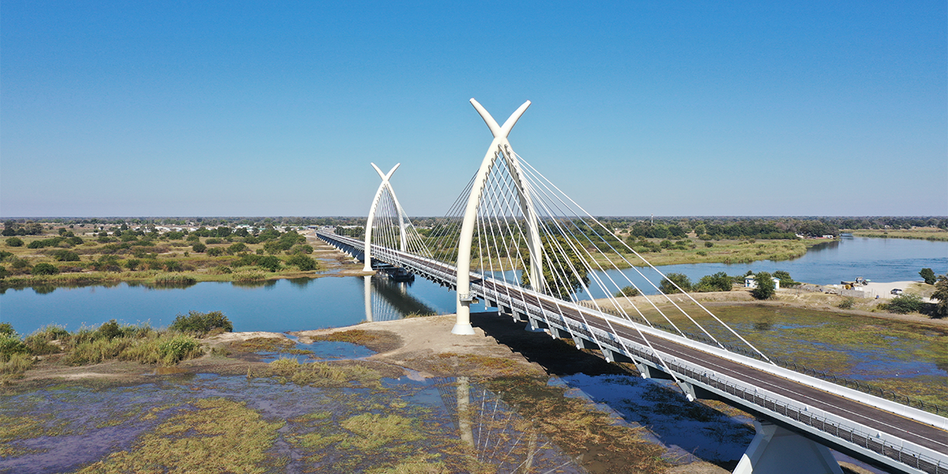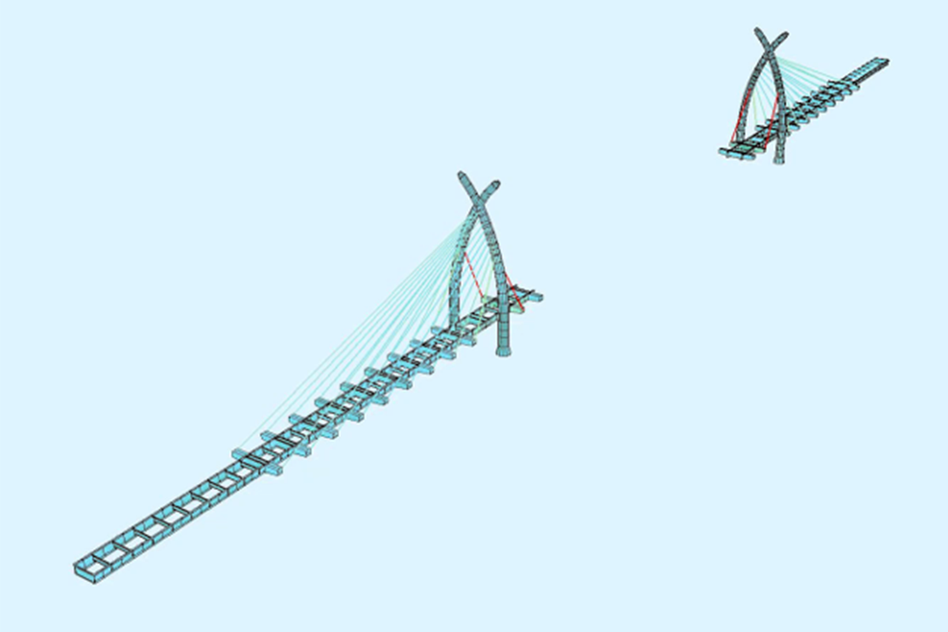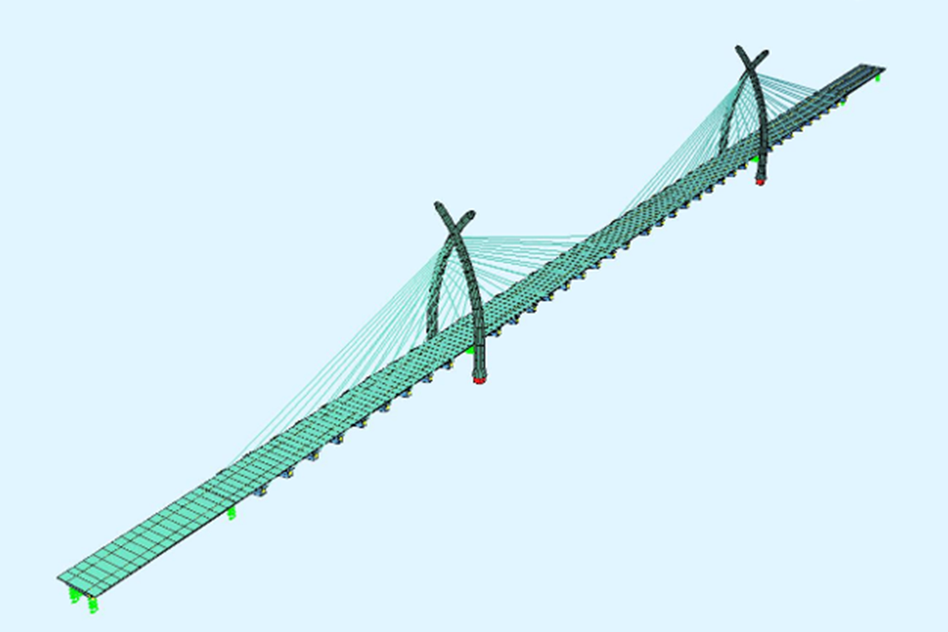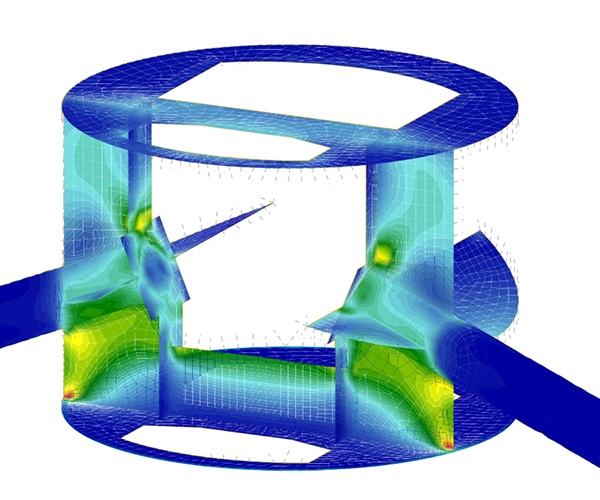In the Okavango Delta, a unique ecosystem in northern Botswana, a new cable-stayed bridge permanently connects the two riverbanks in the north-eastern part of the delta for the first time. Measuring 488.7 m in length and 12.4 m in width, the bridge has a main span of 200 m and spans the approximately 120 m wide riverbed of the Okavango and the adjacent floodplains. Upstream foreland bridges preserve these floodplains, allowing natural flooding to pass unimpeded.
The striking A-shaped pylons of the bridge are inspired by elephant tusks, symbolising Botswana's significant elephant population and giving the structure a strong regional identity. Since its completion in 2022, the bridge has made a significant contribution to infrastructure development in the Okavango Delta. It has replaced the previous ferry connection and, for the first time, provides people living to the east of the river with reliable, year-round access to the town of Mohembo and, consequently, to medical care and other important educational and cultural facilities, regardless of water levels and ferry operations.
SOFiSTiK was used to model and pre-dimension the supporting structure of the power bridge for the preliminary design. The construction stages of the cantilever construction were mapped in the design using SOFiSTiK's Construction Stage Manager (CSM), and complete dimensioning was carried out, including an investigation for the 'earthquake' load case. For the structural design review, a comparative calculation of the final structural analysis was performed, and important design details were examined with regard to their load-bearing behaviour using the SOFiSTiK program system.



